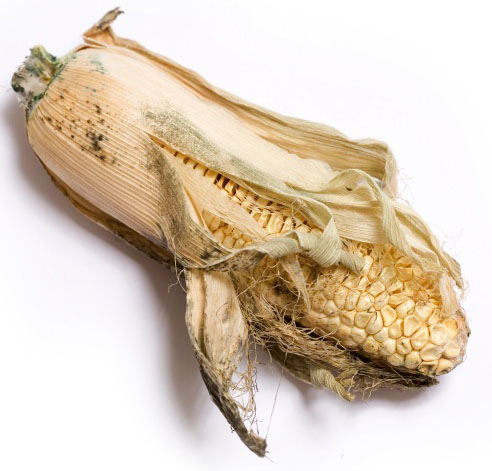Tumor cells ignore surroundings
The microenvironment surrounding cancer cells can influence tumor progression. To understand the nature of tumor-microenvironment interactions, Alissa Weaver, M.D., Ph.D., and colleagues are using mathematical and computational modeling. Previously, the investigators described a mathematical model that drives computer simulations of tumor growth, which suggested that the microenvironment determines the tumor’s ultimate cellular makeup and invasive potential. Now, they have collected experimental data from a panel of six related breast epithelial cells lines that represent different tumor progression stages – from normal to tumorigenic – and incorporated the data into the model.
The researchers report in the Nov. 15 issue of Cancer Research that constrained (growth factor-deprived, space-limited) microenvironments favor the growth of aggressive, tumorigenic cells, but that resource-rich microenvironments favor the growth of non-tumorigenic cells. The findings suggest that a critical feature of tumor progression is the selection of cells that become independent of the microenvironment and can grow despite limited resources. Therapies directed at this change might be effective cancer treatments.
— Leigh MacMillan
A toxic fungus among us
Aflatoxin is a naturally occurring, carcinogenic toxin produced by the common fungus Aspergillus flavus, which often contaminates grains, nuts and spices. Aflatoxin B1 (AFB), the most toxic of the 13 types of aflatoxin, induces mutations in DNA and has been linked to human liver cancer. One of AFB’s metabolic products reacts with DNA to form adducts (pieces of DNA to which a chemical has bonded), which can interfere with DNA replication and produce mutations.

(iStockphoto.com)
Michael Stone, Ph.D., and colleagues are studying how one form of AFB adduct (called the α-FAPY anomer) interacts with DNA. In the Nov. 11 issue of the Journal of the American Chemical Society, the researchers report the structure of the AFB-α-FAPY adduct and describe how the adduct inserts into double- and single-stranded DNA. The structural distortions in the DNA molecule caused by this adduct may help explain how this form of aflatoxin adduct destabilizes the DNA duplex and blocks replication. The findings could provide insight into aflatoxin’s cancer-causing mechanisms.
— Melissa Marino
How reovirus goes a-wandering
Many viruses spread systemically through the bloodstream from mucosal sites of infection to produce organ-specific disease. The viral factors that mediate this dissemination within the host are largely unknown. Reoviruses – a family of viruses that infect the gastrointestinal and respiratory systems and then spread to other organs – are an ideal experimental system for examining viral spread.

(courtesy of Terence Dermody, M.D.)
To study the role of the reovirus protein σ1s, Karl Boehme, Ph.D., Terence Dermody, M.D., and colleagues used genetic engineering to construct a reovirus strain missing σ1s. They found that σ1s-deficient reovirus grows in culture and infects the intestines of newborn mice like normal reovirus. But σ1s-deficient reovirus is not detected in the blood of infected animals and fails to spread to the brain, heart and liver, suggesting that σ1s plays a key role in reovirus dissemination. The findings, reported in the Nov. 24 Proceedings of the National Academy of Sciences, could contribute to the development of therapeutics designed specifically to interrupt viral spread.
— Leigh MacMillan
Anti-aging diabetes drug
As we age, our kidney mass can shrink by up to 25 percent, and the organ becomes stiff and “scarred” (sclerotic and fibrotic), leading to reduced kidney function. Previously, Agnes Fogo, M.D., and colleagues found that a class of drugs used to treat diabetes – called PPAR-gamma agonists – can reduce nondiabetic kidney damage.
In the November issue of the Journal of the American Society of Nephrology, the researchers have now demonstrated that this class of drugs can also protect against aging-related kidney damage. They found that treating aging rats with the PPAR-gamma agonist pioglitazone for six months substantially improved several signs of kidney damage: it reduced protein loss into the urine, improved the kidney’s filtration system, and decreased sclerosis. These improvements in kidney function appeared to be due, in part, to increased expression of klotho – a recently described anti-aging molecule – and decreased mitochondrial injury and systemic and local oxidative stress. The results suggest that PPAR-gamma agonists may be beneficial in treating aging-related renal injury.
— Melissa Marino
We welcome suggestions for research to highlight in Aliquots. The items should be primary research articles (no reviews, editorials or commentaries) published within the last two months in a peer-reviewed journal. Please send the article citation (PDF if available) and any other feedback about the column to: aliquots@vanderbilt.edu.
Past Aliquots
June 22, 2012
June 8, 2012
May 11, 2012
April 27, 2012
April 13, 2012
March 30, 2012
March 16, 2012













